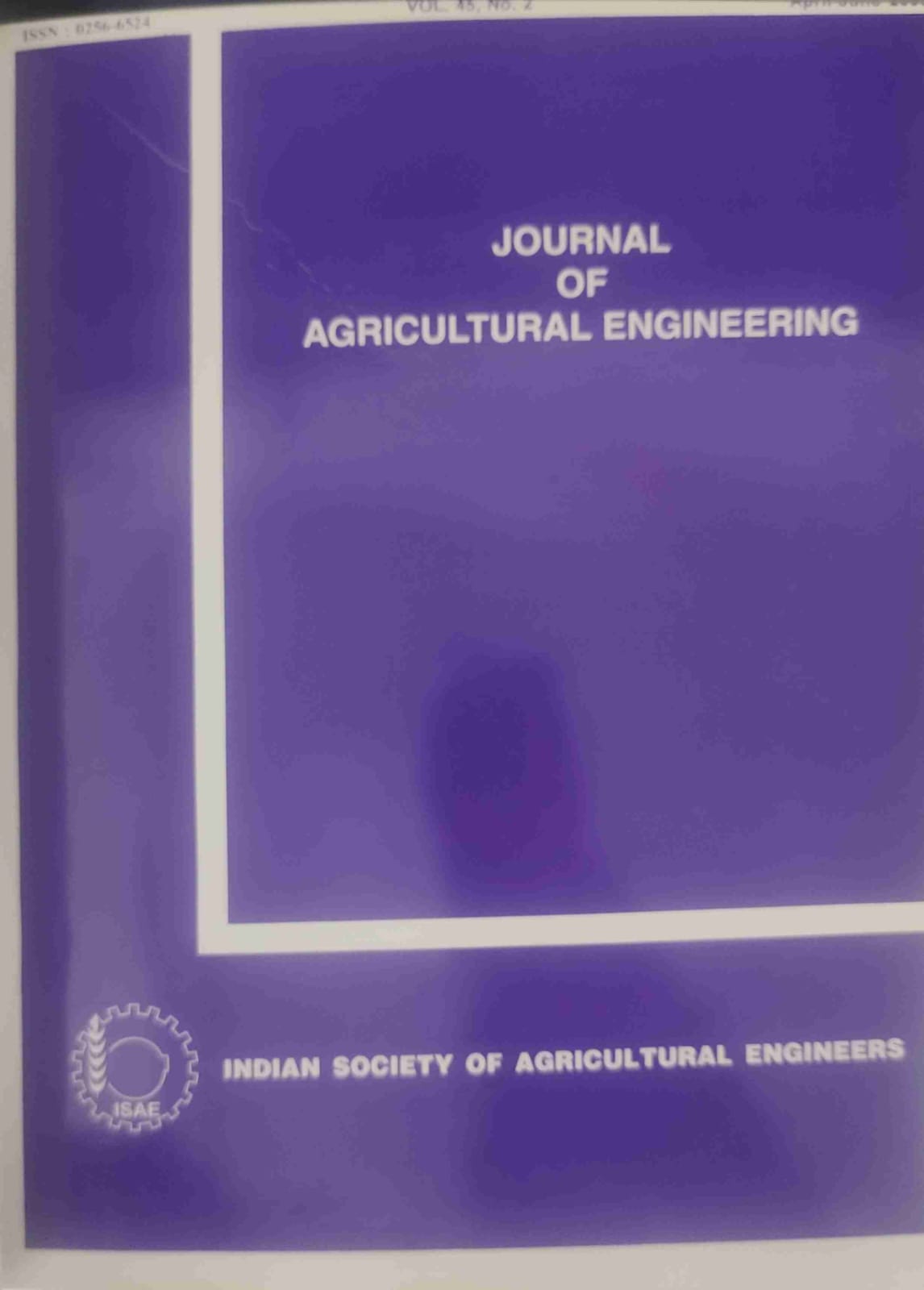Some Engineering Properties of Garlic (Allium sativum L)
DOI:
https://doi.org/10.52151/jae2008452.1321Abstract
Garlic (Allium sativum L.) (Cultivar G-282) grown in Indian subcontinent was selected to establish some of its useful engineering properties. The shape, average diameter, weight, bulk density, segment number of whole garlic, average length, width, thickness, geometric mean diameter, sphericity and mass weight of 1000 garlic segment were determined (at 40.50 % moisture content on wet basis) as round, 5.12 cm, 28.64 g, 414.40 kg/m3 , 16.32,26.25 mm, 10.36 mm, 8.73 mm, 13.34 mm, 0.51 and 1813.60 g, respectively. In the moisture content range from 23.05 to 40.50 %(w.b.), the terminal velocity, angle of repose, specific gravity, compressive and shear forces of garlic segment increased from 7.18 to 12.24 mis, 25.53 to 37.50 degree, 0.90 to 0.97,2.25 tol0.70 kg and 1.75 to 2.83 kg, respectively, while bulk density decreased from 483.10 to 449.76 kglm3 • The static coefficient of friction increased on three surfaces, namely, teak wood (0.46 to 0.53), aluminium (0.38 to 0.48) and mild steel (0.34 to 0.41) with increase in moisture content from 23.05 to 40.50 % (w.b.).
References
Baruchin AM; Sagi A; Voffe B; Ronen M. 2001. Garlic burns. Burns, 27, 781-782.
Baryeh E A. 2001. Physical properties of Bambara groundnuts. J. Food Engng., 47 (4), 321-326.
Brar B S; Gill S P S; Sandhu K S. (1994). Studies on the physico-chemical characteristics of garlic. Haryana J. Hort. Sci., 23 (2), 173-176.
Dhingra D; Paul S. 2005. Post Harvest Technology of Garlic - A Review. J. Agric. Engng., 42 (1), 1-8.
Haciseferogullari H; Ozcan M; Demir F; Calisir S. 2005. Some nutritional and technological properties of garlic. J. Food Engng., 68, 463-469.
Indian standard. 1967. 4333 (Part III). Method of Analysis of Food Grains.
Joshi D C; Das S K; Mukherji R K. 1993. Physical properties of pumpkin seeds. J. Agric. Engng. Res., 54, 219-229.
Madamba P S; Driscoll R H; Buckle K A. 1993. Moisture content determination of garlic by convection oven method. ASEAN Food J., 8(2), 81-83.
Mohsenin N N. 1986. Physical Properties of Plant and Animal Material. Gordon and Breach, New York.
Masoumi A A; Tabil L; Opuku A. 2004. Determining Drag coefficient and terminal velocity of garlic in vertical wind tunnel. Paper number 046041, ASAE Annual
Meeting. Published by the American Society of Agricultural and Biological Engineers, St. Joseph, Michigan (www.asabe.org)
NHRDF. 2001. Garlic cultivation in India. Technical Bulletin No.7, National Horticultural Research and Development Foundation (NHRDF), Nasik, India. Sahay K M; Singh K K. 1998. Unit Operations of Agricultural Processing. Vikas Pub. House Pvt. Ltd., New Delhi.
Sharma G P; Prasad S. 2001. Drying of garlic (Allium sativum L.) cloves by microwave-hot air combination. J. Food Engng., 50, 99-105.
Singh K K; Goswami T K. 1996. Physical properties of cumin seed. J. Agric. Engng. Res., 64, 93-98.
Sytkei G. 1976. Mechanics of agricultural materials. Department of Woodworking Machines, University of Forestry and Wood Science, Sopron, Hungary.
Vashaney A K; Vyas D M; Akbari S H. 2005. Some physical and engineering properties of cumin seed. Agric. Engng. Today, 28 (3-4), 7-10.














